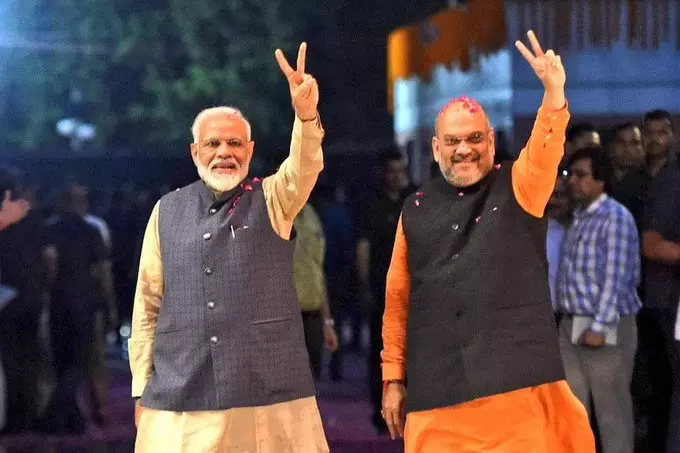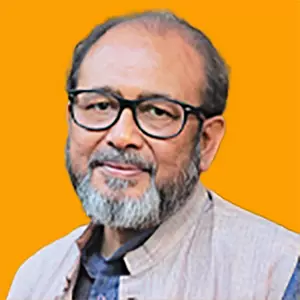
- Home
- India
- World
- Premium
- THE FEDERAL SPECIAL
- Analysis
- States
- Perspective
- Videos
- Sports
- Education
- Entertainment
- Elections
- Features
- Health
- Business
- Series
- In memoriam: Sheikh Mujibur Rahman
- Bishnoi's Men
- NEET TANGLE
- Economy Series
- Earth Day
- Kashmir’s Frozen Turbulence
- India@75
- The legend of Ramjanmabhoomi
- Liberalisation@30
- How to tame a dragon
- Celebrating biodiversity
- Farm Matters
- 50 days of solitude
- Bringing Migrants Home
- Budget 2020
- Jharkhand Votes
- The Federal Investigates
- The Federal Impact
- Vanishing Sand
- Gandhi @ 150
- Andhra Today
- Field report
- Operation Gulmarg
- Pandemic @1 Mn in India
- The Federal Year-End
- The Zero Year
- Science
- Brand studio
- Newsletter
- Elections 2024
- Events
- Home
- IndiaIndia
- World
- Analysis
- StatesStates
- PerspectivePerspective
- VideosVideos
- Sports
- Education
- Entertainment
- ElectionsElections
- Features
- Health
- BusinessBusiness
- Premium
- Loading...
Premium - Events

There is no democratic process, similar to how Indira Gandhi functioned; Modi-Shah perhaps sought to install new-gen leaders
For several days, a cartoon that RK Laxman drew in The Times of India, in 1982, kept coming back into mind, so much that I Googled it. It depicted then Prime Minister Indira Gandhi, umbrella haughtily in hand, walking past a file of tall and stout individuals. All were depicted as clad in the traditional politicians’ attire – dhoti or pyjama, with accompanying kurta.
Image: https://yousaidit-rklaxman.blogspot.com/
A newspaper was shown flung on the ground. The headline provided the context: ‘Hunt is on for Andhra CM’. The cartoon showed Indira poised in front of the leaders, pointing a finger at one of them, saying, “OK, you, there, you are the CM. What’s your name?”
The backdrop to what Laxman was caustically referred to was her search for a chief minister in Andhra Pradesh after Rajiv Gandhi publicly humiliated the incumbent, T Anjaiah, for extravagantly welcoming him at Hyderabad’s Begumpet airport. Rajiv was so angry that on his return to Delhi, he got his mother to sack Anjaiah.
The event not just led to the Congress appointing less known leaders as CMs, but also catalysed the Telugu self-respect movement which saw NT Rama Rao’s emergence as political leader, forming the Telugu Desam Party (TDP), and eventually becoming the CM within a year.
Unknown entities
Before the suspense over the Bharatiya Janata Party’s (BJP) choices for chief ministers, and their two deputies each, were finally announced more than a week after the verdict from the three Hindi heartland states — Madhya Pradesh, Rajasthan and Chhattisgarh — not many would have known the names of Mohan Yadav, Bhajan Lal Sharma and Vishnu Deo Sai. Or, for that matter, Rajendra Shukla, Jagdish Devda, Diya Kumari, Prem Chand Bairwa, Vijay Sharma and Arun Sao. Few people, even active politically, would have known these little known political leaders from the three states.
There of course is this harsh reality – there was little democratic participation in the decisions. The observers too had little choice in making the selections. The only issue was to ensure that Chouhan and Raje, and to some extent Raman Singh previously, accepted the rejection of their claims. But then, even the Congress, in the years it was the dominant party, was driven by the High Command culture.
But there is a moot question: Given the fact that the three BJP leaders — now CMs or CMs to be, chosen after fair delay to lead the governments in these states — were not very tall personalities even within the party, what message has the central duopoly comprising Prime Minister Narendra Modi and Home Minister Amit Shah conveyed to the rank and file within the BJP, and to the public at large?
Never forgives, never forgets
Before answering this question, pardon another recollection — this one embroiling me. The story is nearly a decade old. By then, Modi was the BJP’s declared PM candidate for the 2014 Lok Sabha elections. His biography, which I had written, had been published several months prior to this and was widely noticed. Other journalists often spoke to me for quotes and interviews for my perspective on him.
One of them worked for the now-out-of-publication magazine, Society. A couple of weeks after this conversation with the journalist, I spotted the latest issue at a newsstand, with Modi’s picture on the cover. But what made the ground beneath me to figuratively sink was a quote appended to my name beneath his picture: “Modi Never Forgives, and Forgets, says Biographer Nilanjan Mukhopadhyay”.
I was not the first one to make this observation and have not been the last one. Modi was also not the first or the last to earn this epithet. As it became evident that the three states will get new CMs and the duo would banish Shivraj Singh Chouhan and Vasundhara Raje to virtual vanvaas, I was reminded of this attribute of the PM.
At one level, the decision to jettison the two and push them to the proverbial land’s end of their political careers was purely personal. This was retribution at their decision to be competitive and throw their hats in the ring when the race for the party’s prime ministerial candidate was still an open one in 2011-12, and even early 2013, when the Rashtriya Swayamsevak Sangathan (RSS) was still wavering on the issue.
Eventually, Modi raced ahead of all competition and became PM. Chouhan and Raje fell by the wayside and remained chief ministers till 2018, when they failed to lead the party in campaigns they led. While Chouhan returned as CM in March 2020, the former Rajasthan CM was kept away from the spotlight within the party, even when efforts were made to destabilise the Ashok Gehlot government.
More than personal grudge
Despite this backdrop, it is not merely personal grudge that motivated Modi’s decision to sideline the two leaders who remained at the helm of the BJP in MP and Rajasthan for close to two decades. – Chouhan after Uma Bharati lost backing of the leadership in November 2005, and Raje after Bhairon Singh Shekhawat was made Vice-President in 2002.
Likewise, the decision to not nominate Raman Singh once again as Chhattisgarh CM was not taken solely because he was the choice of the previous generation of BJP’s leadership, consigned mainly to the Margdarshak Mandal. Significantly, the decision not to name chief ministerial candidates in any of these states was taken when the path to political power was considered rocky for the party in MP and Chhattisgarh, with Rajasthan too, poised evenly.
In hindsight, it is clear that the Modi-Shah combine felt that the situation provided an opportunity to install a new generation of leaders in the three states. Despite the BJP securing an overwhelming mandate in all the three states, the Modi-Shah duopoly remained firm on this decision and despite the show of strength by Chouhan and Raje, they did not give in. Quite clearly, the message is that this mandate is little but people’s endorsement of Modi’s leadership.
Significantly, the leaders who have been chosen do not have significant personal following, among people as well as within the party. They would without doubt remain beholden to Modi and Shah, a point emphasised by all the appointees in their thank-you statements. From 2014 onwards, several BJP leaders with little support were appointed CMs and remained at the mercy of the leadership.
Caste equations at play
But, it was not just the loyalty factor behind these selections. After all, the type of leaders ‘chosen’ in the cartoon by Indira Gandhi are dime a dozen in every party, including the BJP. The selection of this current lot of CMs and Deputy CMs has been done carefully, keeping in mind the caste combination of North India and the effort has been to appease every umbrella caste – upper castes, OBCs, Dalits and tribals. Even among these caste groups, the reachout is to both dominant and non-dominant castes.
In this choice of being careful to represent almost every caste group is a worry that the Modi-Shah duo senses but camouflages. We must recall that after his triumphant run in 2014, Modi was brave and did not make caste-based appeasements. In Maharashtra, Jharkhand and Haryana, not very well known leaders were made chief ministers even though they were from non-dominant communities. Devendra Fadnavis is not a Maratha, Raghubir Das is not a tribal and Manohar Lal Khattar is not a Jat.
We must ponder why, even after a fairly comprehensive victory in the three states now, the Modi-Shah duo has to ensure representation to every major caste clock and appoint deputy chief ministers in all these states.
Undeniably, the BJP has a clear majority in the three states. The government and the party will likely be supervised by remote control from Delhi. This will make it easier for Modi-Shah to micromanage the campaign during the Lok Sabha polls.
In contrast, the Congress has made no effort so far to replace the old generation of leaders and project new faces that can enter into the parliamentary polls with enthusiasm. By holding their nerves – during the campaign and when the old-timers tried to push back — Modi and Shah have not just demonstrated their political astuteness but also their resolve to force changes for their benefit and bolstering their hegemony on the party and government.
(The Federal seeks to present views and opinions from all sides of the spectrum. The information, ideas or opinions in the articles are of the author and do not necessarily reflect the views of The Federal.)


